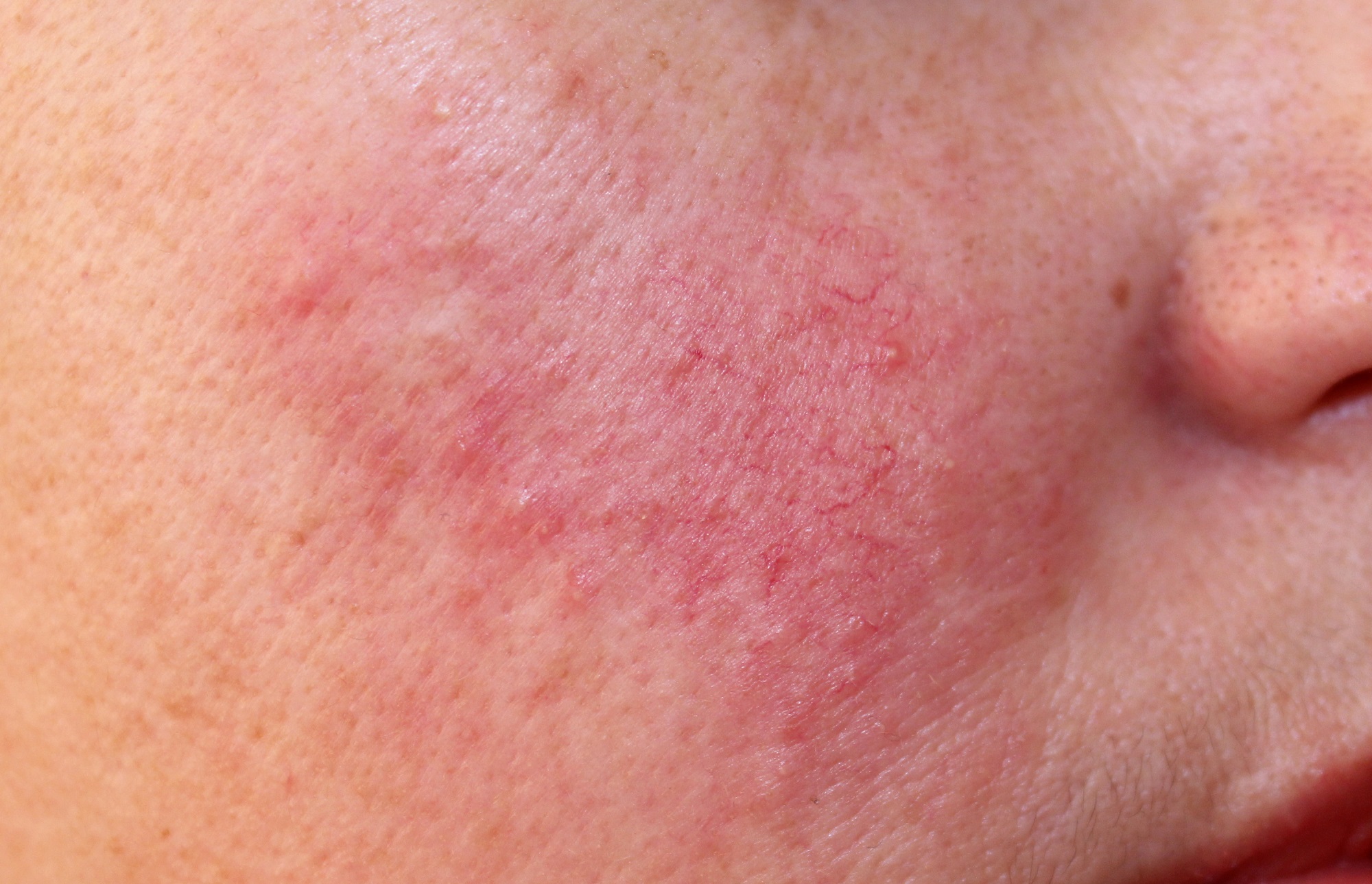
Understanding Rosacea: Causes, Symptoms, and Treatment
Rosacea is a common chronic skin condition that primarily affects the face. It is characterized by flare-ups and periods of remission and commonly presents as redness, swelling, and acne-like breakouts. Rosacea can affect anyone, though it's most prevalent among middle-aged women with fair skin.
What is Rosacea?
Rosacea is a condition that causes the skin on your face to look red and irritated. It's not just a cosmetic problem; it can also lead to significant physical discomfort and emotional distress. The exact cause of rosacea is unknown, but it's thought to be a combination of genetic and environmental factors.
Types of Rosacea
There are four main subtypes of rosacea:
- Erythematotelangiectatic rosacea: Characterized by redness, flushing, and visible blood vessels.
- Papulopustular rosacea: Similar to acne, this type presents with redness and swollen red bumps.
- Phymatous rosacea: Involves skin thickening and a bumpy texture, often affecting the nose (rhinophyma).
- Ocular rosacea: Affects the eyes, causing redness, irritation, and swollen eyelids.
Each subtype has unique symptoms, and it's possible to experience more than one.
Recognizing Rosacea: Symptoms and Signs
- Facial Redness: Persistent redness, especially in the central part of the face.
- Swollen Red Bumps: Acne-like breakouts which may contain pus.
- Visible Blood Vessels: Thin, red blood vessels become visible on the cheeks and nose.
- Eye Irritation: Red, dry, and swollen eyes.
- Burning Sensation: Affected areas often feel hot or tender.
Common search terms people might use when identifying rosacea include "red face", "persistent flush", "adult acne", and "breakouts with eye redness".
Who Gets Rosacea?
While rosacea can affect people of all backgrounds, you're more likely to develop it if you:
- Are between the ages of 30 and 60.
- Have fair skin, blonde hair, and blue eyes.
- Have a family history of rosacea.
- Have Celtic or Scandinavian ancestry.
- More women are affected than men, but men with the condition often experience more severe symptoms.
What Causes Rosacea?
The exact cause of rosacea remains unknown, but several potential factors include:
- Abnormalities in facial blood vessels.
- A reaction to microscopic skin mites called Demodex mites.
- Immune system responses.
- Environmental factors like temperature extremes.
Triggers may vary, and common ones include spicy foods, alcohol, sunlight, stress, and hot beverages.
How Common is Rosacea?
Rosacea is a prevalent condition. According to the American Academy of Dermatology Association, it affects more than 16 million Americans. Many more may have the condition but remain undiagnosed.
Symptoms and Causes of Rosacea Flare-ups
Rosacea symptoms can flare up for weeks to months and then diminish for a while. It's essential to identify and avoid potential triggers to manage flare-ups effectively.
Some common causes include:
- Sun exposure
- Stress
- Hot baths
- Wind and cold weather
- Heavy exercise
Diagnosis and Tests
Your healthcare provider can diagnose rosacea by evaluating your symptoms and inspecting your facial skin. There are no specific tests for rosacea, but your healthcare provider may rule out other conditions that cause similar symptoms, like lupus or allergic reactions.
Management and Treatment of Rosacea
While there is no cure for rosacea, several treatments can help manage symptoms.
Topical and Oral Medications
- Topical Medications: These can help reduce redness and inflammation. Common prescriptions include metronidazole, azelaic acid, and ivermectin cream.
- Oral Antibiotics: These are often used for moderate to severe rosacea to reduce inflammation. Examples include doxycycline and minocycline.
Laser and Light-Based Therapies
Laser treatments can reduce visible blood vessels and redness. IPL (Intense Pulsed Light) therapy is another option for some patients.
Skincare and Lifestyle Changes
- Avoid Triggers: Maintain a diary to help identify personal triggers.
- Sun Protection: Use broad-spectrum sunscreen daily.
- Gentle Skincare: Use non-irritating skincare products and avoid rubbing or touching the face excessively.
- Manage Your Diet: Avoid spicy foods and alcohol, which are known triggers for many.
For detailed treatment options and guidance, visit the American Acne and Rosacea Society or consult with a dermatologist.
Living With Rosacea
Rosacea can significantly impact your life, but proactive management can help you maintain a good quality of life. Seeking support groups or counseling for emotional support can also be beneficial.
When to See a Doctor
See your dermatologist if:
- Your symptoms worsen or do not improve with treatment.
- Rosacea starts affecting your eyes.
- You're experiencing a lot of discomfort.
Additional Common Questions
Is rosacea a form of acne?
Although some types present as acne-like breakouts, rosacea differs from acne. Rosacea does not cause blackheads, which are characteristic of acne.
Does rosacea go away?
Rosacea is a chronic condition and may never go away entirely. However, with appropriate treatment and lifestyle adjustments, symptoms can be managed effectively.
Can rosacea occur elsewhere on the body?
Rosacea primarily affects the facial region. If you have a rash elsewhere, see a dermatologist for a proper diagnosis.
Can rosacea affect your vision?
Yes, if rosacea causes eye problems (ocular rosacea), it can impact vision. An ophthalmologist should evaluate symptoms like eye dryness, redness, or eyelid swelling.
Visit the National Rosacea Society for more information on living with rosacea, treatment options, and ongoing research.
In summary, while rosacea is a chronic condition without a definitive cure, modern medicine offers a range of treatments to manage and mitigate its symptoms significantly. Working closely with a dermatologist is crucial to finding the best treatment plan tailored to your needs.

Identify Skin Conditions Instantly
Try Rash ID for Free